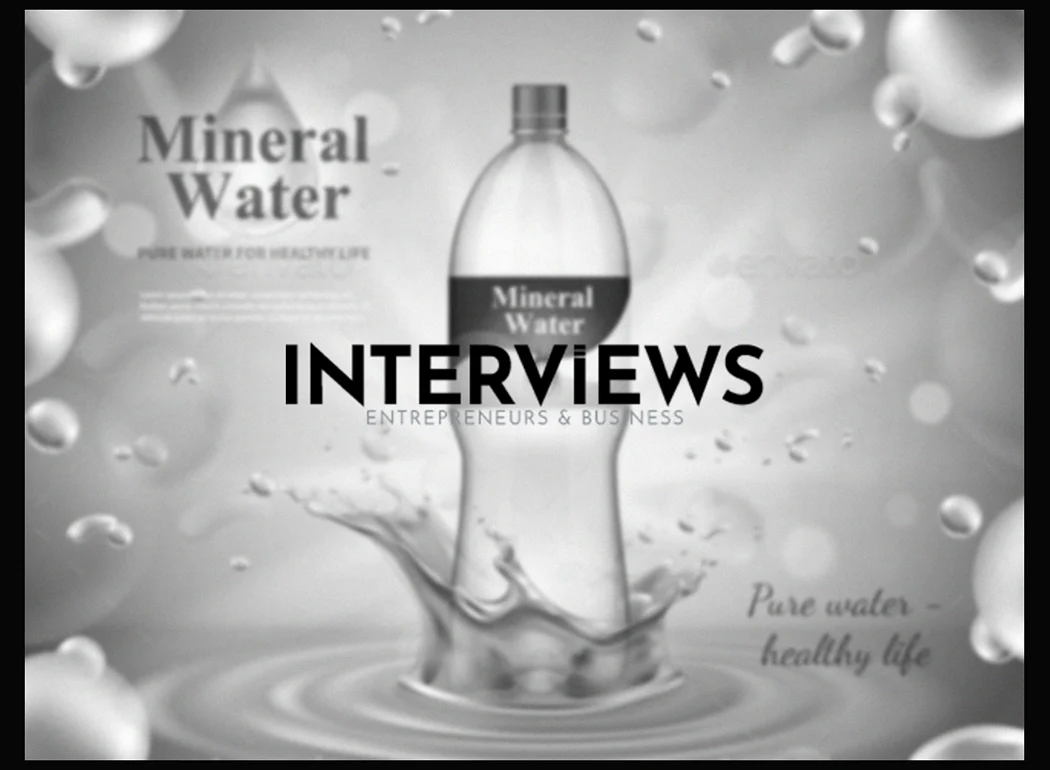Quench Your Thirst for Entrepreneurship: Diving Deep into the Bottled Water Business
Have you ever seen a bottle of water and thought about selling it? You’re not alone. The bottled water business is surprisingly profitable. It is a multi-billion dollar industry that grows quickly, much like a weed in a sidewalk crack.
Market Size and the Flow of Profit
Numbers time. The global bottled water market is mammoth. It’s estimated at over $40 billion. In 2021, there was a consumption of 350 billion liters of bottled water globally, leading to $270 billion in sales. The demand keeps rising. Projections suggest a $500 billion market by 2030. In the US, sales in 2022 were nearly $46 billion, up from $40.8 billion the year prior. Moreover, forecasts indicate a 5.7% CAGR from 2025 to 2030. It’s a sea of possibilities.
Profit Margins: Are We Swimming in Cash?
Is it profitable? Yes. For individual bottles, profit margins are around 35%. This is after considering production, packaging, and advertising costs. If you have a strong brand and innovation, margins can reach from 50% to as much as 200%. Selling cases offers around 15% margins, which isn’t bad for something we get from the tap.
Factors Influencing Your Watery Wealth
Before diving into this business, consider these factors:
- Production Costs: Think raw materials and equipment. These costs form your baseline.
- Market Demand: What do consumers want? Are they seeking flavored, sparkling, or electrolyte water? Understanding your audience matters.
- Competition: The bottled water aisle is crowded. You compete not just with other brands but beverages overall. You must stand out—perhaps your water cures headaches?
- Distribution and Logistics: Water is heavy. Getting it to customers efficiently without high fuel costs is tricky.
- Environmental Concerns: Plastic bottles aren’t eco-friendly. Addressing these issues meets consumer expectations. Go green or risk scrutiny.
Strategies to Make a Splash
If you want to plunge into this business, here’s your guide:
- Quality is King (or Queen): Your water must be exceptional. Exceed the standards. No one wants bottled swamp juice.
- Brand Like Beckham: Create a recognizable, appealing brand. Know your audience. Are they outdoor lovers? Health-focused? Your brand should speak to their preferences.
- Marketing Magic: Use every marketing tactic available. Social media? Traditional ads? Spread the word.
- Operations Optimization: Make processes smoother. Cut costs without sacrificing quality.
- Innovation Infusion: Stay ahead. Experiment with new flavors and eco-friendly packaging to avoid becoming outdated.
Show Me the Money (Or How to Get Started)
Starting a bottled water company requires significant investment, typically between $500,000 to $1.5 million. This amount depends on whether you aim for a local niche or a global brand.
Where Does All That Cash Go?
Here’s how your startup funds might be allocated:
- Bottling Equipment: $100,000 – $500,000 (Machines for bottling aren’t inexpensive, unless you plan to do it manually.)
- Facility: $50,000 – $300,000 (Leasing or buying a space for operations matters.)
- Filtration and Treatment: $20,000 – $150,000 (Ensuring water quality is vital.)
- Packaging and Labeling: $10,000 – $100,000 (Labels and bottles are the attire for your product.)
- Initial Bottle Inventory: $5,000 – $50,000 (You need bottles to sell water.)
- Quality Testing & Compliance: $2,000 – $30,000 (Ensure you aren’t selling unsafe water.)
- Permitting and Licensing: $1,000 – $10,000 (Red tape is part of business, unfortunately.)
- Marketing and Branding: $5,000 – $50,000 (Create awareness of your product.)
Bootstrapping Your Way to Bottled Water Baron Status
No millions? Don’t worry, aspiring entrepreneur! Starting with little capital is challenging but doable. It requires hustle and creativity:
- Market Research on Fumes: Explore niche markets. Identify what’s lacking and trending.
- USP on a Shoestring: Create a unique selling proposition. What makes your water different?
- Business Plan on a Napkin: Outline your strategy. Include goals, market analysis, and financial projections.
- Brand Identity on Canva: Develop appealing logos and branding without high expenses.
- Networking Like Your Life Depends On It: Connect with suppliers and industry experts. Attend local events.
- Social Media Savvy: Promote your brand online for free. Become a social media influencer.
- Crowdfunding Crusade: Use resources like Kickstarter to seek funding with an appealing narrative.
- Pre-Order Power: Assess demand before launch and generate cash flow.
- Partnership Prowess: Collaborate with similar businesses to share resources.
- Start Small, Think Big: Test your concept at pop-up events or farmers markets.
- Government Grant Grab: Research grants and loans available for small businesses.
- Content Marketing Cavalry: Create blogs and videos to establish authority.
- Local Love: Partner with local establishments to gain visibility.
- PR Push: Attract media attention and secure local coverage.
- Online Oasis: Set up an online store. Utilize e-commerce platforms.
Regulatory Rapids: Navigating the Legal Stream
Government regulations are unavoidable. You can’t sell just any water without following laws.
FDA Frenzy and Permits Panic
If you operate in California, the California Department of Public Health oversees your bottled water business. Nationally, the FDA manages bottled water as food under federal law.
Permit Checklist (Not Exhaustive, But Exhausting Enough):
- Company/Business Formation: Register your company legally.
- FSSAI Certification (India Specific): Essential in India for food safety.
- SSI Registration (India Specific): For qualifying small-scale operations in India.
- BIS Registration Certificate (India Specific): Necessary certification in India.
- Water Test Results: Prove your water is safe for consumption.
- Pollution Control Certificate: Ensure you meet environmental safety standards.
- Business License: Required general business license.
- FDA License: Necessary for food regulation compliance.
- food and drug operations in the US.
- State Health Department Permit: Your state’s health authorities want regulations.
Production Pipeline: From Source to Sip
Where does bottled water come from? It’s not conjured from thin air, though that would be neat.
Water Sourcing Secrets Revealed
Bottled water companies are open about their sources. Not all of it is glacial melt from pristine mountains, though some is.
- Municipal Water Supplies: Brands such as Dasani and Aquafina begin with municipal water, tap water. They purify it a lot.
- Natural Springs: Imagine streams and underground aquifers. Natural springs yield pure water.
- Wells: Dig into the earth for groundwater. A reliable source.
Purification Pilgrimage: Making Water, Well, Water
Whether from a spring or municipal source, bottling water requires purification. It’s not just safe; it should taste like good water.
- Filtration: Removes particles, sediment, impurities. Like a giant water filter.
- Deionization: Removes mineral salts for a pure taste.
- Distillation: Boils water, collects steam. Pure but requires energy.
- Reverse Osmosis: Forces water through a membrane to remove tiny contaminants.
Sales and Marketing H2-Oh-Yeah!
You’ve got water, you’ve got bottles. Now find customers. How to sell what they can get almost for free?
Marketing Maneuvers for Maximum Hydration Hype
- Niche Nirvana: Target specific groups. Athletes? Eco-conscious consumers? Water-smart enthusiasts?
- Brand Building Bonanza: Create a brand story, visual identity, personality. Is your water adventurous or luxurious?
- Bottle Brilliance: Design bottles that catch eyes and function well. Ergonomic? Trendy shape? Instagram-worthy?
- Distribution Domination: Where will you sell? Grocery stores? Gas stations? Online?
- Marketing Mayhem: Use many marketing channels – digital, print, radio. Be creative.
- Analysis & Expansion: Track sales, see what works. Adapt and expand. Dominate the hydration market.
- Content is King: Blogs, social media, videos. Educate and entertain. Be the go-to for water wisdom.
- Local Partnerships for the Win: Collaborate with local businesses and events. Community initiatives can boost visibility.
- Public Relations Power: Get media attention. Use press releases, media kits, build journalist relationships.
- E-commerce Embrace: Sell online. Direct-to-consumer is the way forward.
Key Considerations: Navigating the Watery Terrain
Before launching your water venture, consider crucial points:
Choosing the Right Water: Not All Water is Created Equal
Most bottled water in the US is safe, thanks to the FDA. Some brands appear higher quality or “safer” than others.
- Brand Breakdown:
- Mountain Valley Spring Water: Known for purity and minerals. Sounds fancy!
- Voss Water: Norway’s finest. Naturally filtered and free from contaminants. Comes in a cool bottle.
- Fiji Water: Exotic! Alkaline, artesian, volcanic filtered.
- Nestlé Pure Life: Purified via reverse osmosis. Reliable choice.
- Smartwater: Vapor-distilled and enhanced with electrolytes.
- Aquafina: Reverse osmosis, ozonation, carbon filtration. Municipal water made fancy.
- Dasani: Another brand that purifies tap water.
- Label Literacy: Read labels! Source, treatment methods, added minerals are key.
Sustainability: Don’t Drown the Planet in Plastic
Sustainability is essential. Consumers are increasingly eco-conscious. Embrace sustainable practices:
- Eco-friendly Packaging: Use recycled, plant-based plastics, aluminum, glass, or paper-based options. Be creative!
- Water Conservation: Efficient use in production. Don’t waste water while selling it.
- Climate-Resilient Infrastructure: Consider climate change impacts on water sources.
Industry Tides: Riding the Wave of Change
The bottled water industry evolves. Stay ahead:
- Digital Transformation & Data Analytics: Optimize everything with data. Track trends and predict demand.
- Advanced Treatment Technologies: Keep up with new purification methods for better quality.
- Addressing Water Scarcity & Climate Change: Desalination is worth exploring as a future solution.
There you have it – your look into the bottled water business. It’s a thirsty market with big potential and big challenges. With a solid strategy, innovation, and hard work, you might build a hydration empire. Go forth and conquer responsibly!





